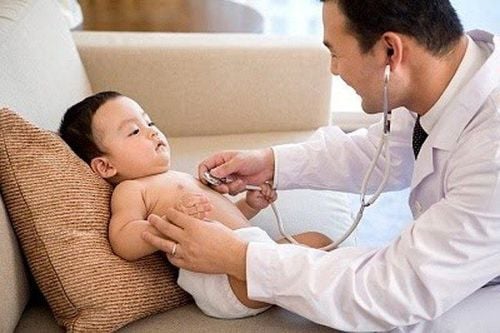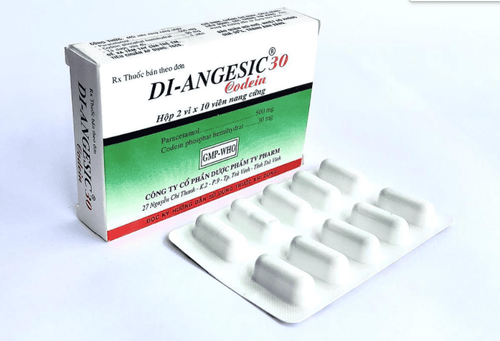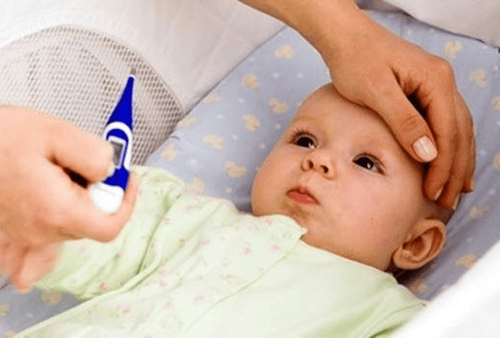This is an automatically translated article.
The article was professionally consulted with Specialist Doctor I Bui Thi Ha - Pediatrician - Neonatologist - Department of Pediatrics - Neonatology - Vinmec Ha Long International General Hospital.According to statistics, the number of babies infected with bacteria is increasing day by day. There are many ways, many causes leading to neonatal sepsis. It could be a transplacental neonatal infection, a transamniotic neonatal infection, or a neonatal infection during childbirth.
1. Infectious routes of neonatal sepsis
1.1. Neonatal infections caused by pregnancy Mainly infectious factors from the mother, then infect the baby through blood, placenta, amniotic membrane. The placenta is an organ that attaches between the mother and the fetus, helping to deliver blood and nutrients as well as antibodies from the mother's body to the baby's body. Therefore, infections in the mother can cross the placenta and infect the baby.Neonatal infection through the placenta
Newborn infection through blood (transmitted from mother to baby), common in the following cases:
The mother has a fever before and during pregnancy, the test has CRP (+ ), white blood cell count increased. The mother has foci of infection in the uterus such as endometritis. Infection of the placenta The mother has syphilis, HIV, rubella,... Neonatal infection through the amniotic fluid has an unusual smell. In case of premature rupture of membranes, the time of rupture of membranes lasts more than 18 hours. Labor lasts more than 12 hours. The mother has an infection of the urogenital tract before giving birth but has not been treated thoroughly or treated incorrectly. The mother was subjected to a lot of vaginal examination during pregnancy, leading to damage and infection of the amniotic membrane. The mother's cervical opening creates favorable conditions for bacteria to easily enter inside, causing infection of the amniotic sac.

External factors that increase the risk of neonatal infection for the baby include:
In case the mother has an infection in the genital area that causes inflammation of the skin and mucous membranes, it will easily infect the baby during labor. normal birth. In the process of preparing for the birth process, due to the lack of hygiene in the room, hospital bed and other items in the delivery room, it will also increase the risk of postpartum infection for the baby. Because of techniques for performing procedures during delivery such as oxygen, intravenous infusion, intubation or catheterization. Cross-infection by sharing bed with sick people. Infectious factors from the fetal side:
During childbirth, the baby was asphyxiated, had respiratory failure, and was preterm. The baby is too low for gestational age. The apgar index is low at birth, especially during the first 10 minutes of labor. Children are traumatized by techniques during birth. 1.3. Infections after birth After birth, children are infected mainly due to care and nutrition problems. The infection here can be direct or indirect through the air, fluid, saliva...when people hold, kiss the baby. Malnourished children with weak resistance will be susceptible to infections, which are common skin infections and respiratory infections.
Maintain hygiene for children improperly: Do not change clothes or diapers for children when they vomit or go to the toilet, do not bathe children regularly or bathe them incorrectly.
Care of the navel area is not good. In newborns, especially in the first days of life, the umbilical cord area still has the umbilical cord, so it is very susceptible to infection. The mother should pay attention to cleaning with an antiseptic solution for the baby, so that the umbilical area is often dry and the umbilical cord falls off naturally.
Exposure to many strangers, the ability to maintain hygiene in communication with children will also be limited, which means that children are at risk of being exposed to more pathogens and bacteria.
Mothers have dermatological inflammatory problems or areas that are often in contact with children such as breasts but are not treated, so they are infected to children during the process of taking care of children.
When detecting that the child has abnormal symptoms such as fever, breastfeeding, fussiness, rash... do not report to the doctor but arbitrarily take medicine, causing the infection to happen faster and more serious.
2. When should I take my child to the doctor?

The child has a high fever or cold sores. The child has a convulsion. The baby is having difficulty or even not suckling at all. Children who are too low weight for their age Have difficulty breathing. Bleeding or passing stools. Jaundice, color does not change when illuminated. Redness or pus discharge in the navel area. Suddenly, the child has a rash or nodules on the skin for no apparent reason. Neonatal infection has many routes of infection and clinical manifestations are also diverse. Take your child to the doctor promptly when there are strange symptoms for early detection and the best treatment.
Pediatrics department at Vinmec International General Hospital is the address for receiving and examining diseases that infants and young children are susceptible to: viral fever, bacterial fever, otitis media, pneumonia in children, .... With modern equipment, sterile space, minimizing the impact as well as the risk of disease spread. Along with that is the dedication from the doctors with professional experience with pediatric patients, making the examination no longer a concern of the parents.
Please dial HOTLINE for more information or register for an appointment HERE. Download MyVinmec app to make appointments faster and to manage your bookings easily.














